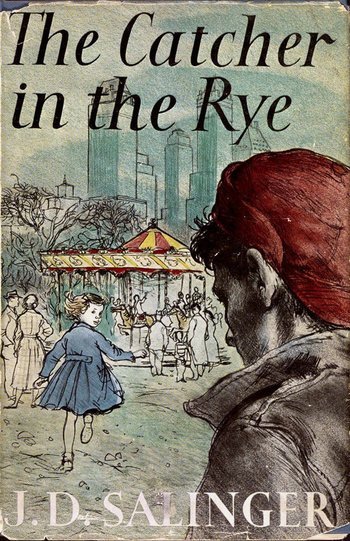It is evident that most if not all teenagers face challenges through the transformation of becoming an adult. J.D Salinger describes teenage behavior such as phoniness and confusion, teenage depression and their need for attention, and their desire to protect innocents in our society. I personally agree that Salinger delivers an accurate depiction of teenagers in our society.
Phony: fake; not genuine. Who is to say what is truly genuine in our society? Salinger demonstrates his view of genuine through his characters in the novel.
Early into the novel, Salinger portrays the main character to be very hateful towards society, and the reason he leaves his schools and public locations is because of other people and their “phoniness.” He illustrates this in chapter two by saying “…I left Elkton Hills because I was surrounded by phonies.
That’s all” (13). Teenagers are confused along the path of life, and will change their attitudes and perspective on things depending on the situation. Salinger demonstrates that all teenagers become “phony” as a defense mechanism to be accepted.
Salinger demonstrates this behavior through his characters by characterizing them as fake or phony. This reminds me of a friend of mine who is extremely entertaining when around our close group of friends.
She/ he will do and say the craziest things, but when someone new is introduced she/ he becomes extremely introverted. It is not that she/ he is acting phony by acting different towards other people, but she/ he is uncertain as to how to present themselves for fear of not being accepted.
This attitude is present in most teenagers, making it a natural thing rather then being phony.
Secondly, Salinger describes his main character as depressed and neglected. Holden (the main character) deals with his depression by rebelling. Salinger exaggerates Holden’s actions and results in a lot of trouble, and he does not seem to help himself get out of these situations.
The circumstances Holden gets into, such as the prostitute problem, cause Holden to receive a lot of attention, which a lot of teenagers need. Many teenagers like to attract attention to themselves for numerous reasons.
For example, back in public school a few of my peers would tape bandages around their wrists as if they had attempted suicide. This did attract attention towards them, although it was mostly negative. These young ladies fabricated depression and thought everything was grimly wrong with society. This scenario is a lot like Holden s perspective on civilization, and he is seeking attention like my former classmates in public school.
Finally, Salinger presents Holden to be obsessed with protecting the innocent. This conduct is human nature. It is not something that is discussed but is a habit of society. It is more obviously shown in mothers, caring and protecting their children from the “bad” or “corrupted” in our society.
Not only is it seen in mothers but also many people demonstrate protectiveness because of regretful experiences they have encountered. For instance, my older brother would sit at the back of the bus on the way to school.
When I started taking the bus he would not let me sit at the back. He knew all of the things that went on at the back and were concerned that I would be “corrupted”. This is remarkably like Holden’s attitude towards his younger sister Phoebe. He wanted to protect her from everything vile because his image of Phoebe was that she was as innocent as they come.
In conclusion, ample proof has been provided that Salinger delivers an accurate depiction of teenagers in our society. He clearly portrays the attitude and thoughts of teenagers. He also accurately describes the phoniness that comes from a confusion, the need for attention, and the potential for corruption that teens face in everyday life.


thank you!!
I think this is great information!